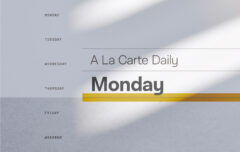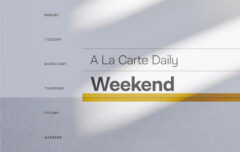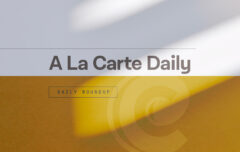Here are some snippets of an interesting article I saw over at In The Faith.
At the St. James AME Church in East San Jose, Calif., young people worship by dancing — choreographed movements inspired by everything from ballet to the latest MTV videos.
It’s an alternative way of praying that helps bring kids into the faith, say church members. It’s also a national trend, said Karla Jenkins, co-coordinator of Christian Dance Fellowship USA, part of a network of thousands of Christian dance groups worldwide.
“Praise dancing is a ministry,” says 17-year-old Ariana Starks at a recent Saturday morning practice at St. James, where she shimmied her shoulders to vibrant gospel music. “Most young people go to church and find it boring. This is a way to attract people into the house of God who wouldn’t normally want to come.”
In recent years, dance clothing stores and mail-order catalogs have begun selling praise-dance garments and props. Praise-dance Web sites are popping up, churches are hosting praise-dance concerts and conferences, and dance studios are offering classes.
Dance worship, or dance ministry, involves prayer movement, sacred dance and liturgical dance. It has a wide range of interpretations depending on the church and the denomination.
“It’s a variety of 20 or 30 styles of dance from jazz to modern to tap, used for the purpose of glorifying God, evangelizing and ministering,” says Ruth Ann Mayer, who has written two books and launched her own Web site (www.christiandance.com) about praise dance. The difference between secular dance and praise dance, she says, is its intent.
“The Lord is using us through the art of dance to preach the word of God,” says Debra Crenshaw, founder of the Fremont-based Christian dance company Dance For His Glory. “It can be entertaining, and people can get enjoyment from it, like the purpose of secular dance. But that’s not our sole purpose.”
I find it difficult to accept dance as ministry. I see no solid Biblical basis for it (despite what this article says). I guess I just don’t see how “people can express prayer through movement when they can’t say it or sing it.” God doesn’t tell us to pray through movement. It seems to me this is just another way of taking the emphasis off the traditional church staples of preaching and prayer.
You can read the rest of the article here.









